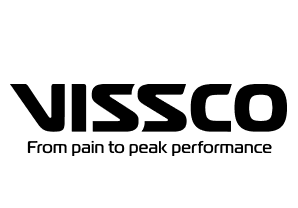About Us:
Diginnovators is a fast-growing startup focused on delivering end-to-end digital solutions across multiple industries, including Advertising, Fintech, eCommerce, Healthcare, and more. Our expertise spans Technology Consultancy, UX/UI Design, Web Development, Mobile App Development, Digital Marketing, AI, Machine Learning, and more. We are driven by innovation, aiming to help businesses scale through superior solutions, exceptional talent, and outstanding service. Our mission is to act as a catalyst for brands and corporates, ensuring timely deliverables and continuous dedicated support.
Job Summary:
The UX/UI Design Intern role is pivotal in contributing to the development of user-centric interfaces for our digital products. This position offers a hands-on opportunity to gain valuable practical experience and exposure to the dynamic field of UX/UI design. As an intern, you will work closely with the design team to create intuitive and visually appealing interfaces that enhance user satisfaction and overall experience.
Key Responsibilities:
- Wireframe & Prototype Development: Assist in the creation of wireframes, prototypes, and user flows.
- User Research: Conduct user research and usability testing to gather valuable insights.
- Cross-Functional Collaboration: Collaborate with cross-functional teams to ensure design feasibility and consistency.
- Creative Brainstorming: Participate in brainstorming sessions and contribute creative design ideas.
- Design Systems Maintenance: Assist in the development and maintenance of design systems and style guides.
- Design Translation: Translate user needs and business requirements into compelling design solutions.
- Industry Trend Awareness: Stay updated with industry trends and best practices in UX/UI design.
- Design Support: Support the design team in various design-related tasks as required.
- Visual Design Creation: Assist in the creation and refinement of visual design elements and assets.
Required Qualifications:
- Education: Enrolled in a relevant degree program in Graphic Design, Human-Computer Interaction, or a related field.
- Software Proficiency: Proficiency in Adobe Creative Suite and other design software.
- Design Principles Understanding: Understanding of user-centered design principles and methodologies.
- Communication & Collaboration: Strong communication and collaboration skills.
- Design Iteration: Ability to iterate on designs based on feedback and user testing.
- User Experience Passion: Passion for creating intuitive and engaging user experiences.
- Web & Mobile Design Knowledge: Familiarity with web and mobile design standards and best practices.
- Task Management: Ability to work in a fast-paced, dynamic environment and manage multiple tasks.
- HTML/CSS Knowledge: Basic knowledge of HTML/CSS and web development technologies.
- Design Experience: Previous design projects or experience in a design-related role is a plus.
What We Offer:
- Professional Growth: Opportunities for continuous learning and development through workshops, mentorship, and hands-on experience in cutting-edge technologies.
- Innovative Work Environment: A dynamic, collaborative startup culture where your ideas and contributions directly impact the company’s success.
- Career Growth Opportunities: Clear pathways for career advancement with regular performance evaluations and opportunities to take on leadership roles.
- Challenging Projects: Engage in cutting-edge projects that push the boundaries of technology, giving you the chance to work on meaningful and impactful solutions.
- Team Collaboration: Be part of a supportive and inclusive team that values diversity, creativity, and collaboration, fostering a positive and innovative work environment.
Who Can Apply?
- Experience – 0 – 6 months
- Availability – Immediate to 7 Days
- Work Location – Hybrid (Balewadi, Pune)
- Stipend – Best in the Industry
Perks and benefits
- Flexible working Hours
- 5-days working
- Employee Health Insurance
- Healthy Working Culture
Get in touch
Lets build and scale your digital products. We are always open to discuss new projects, creative ideas or opportunities to be part of your vision.




